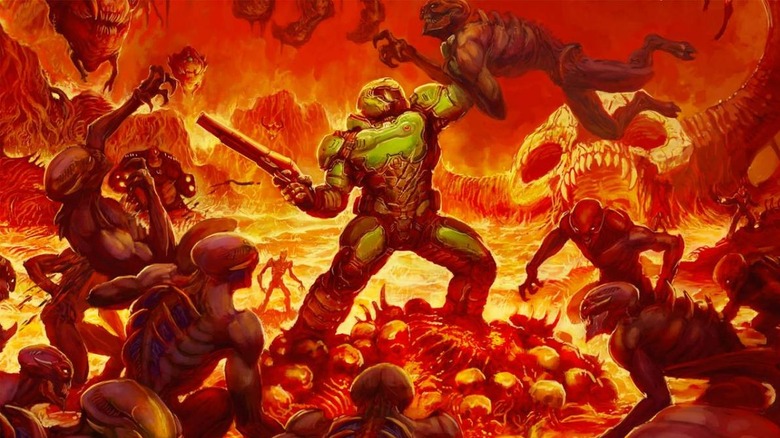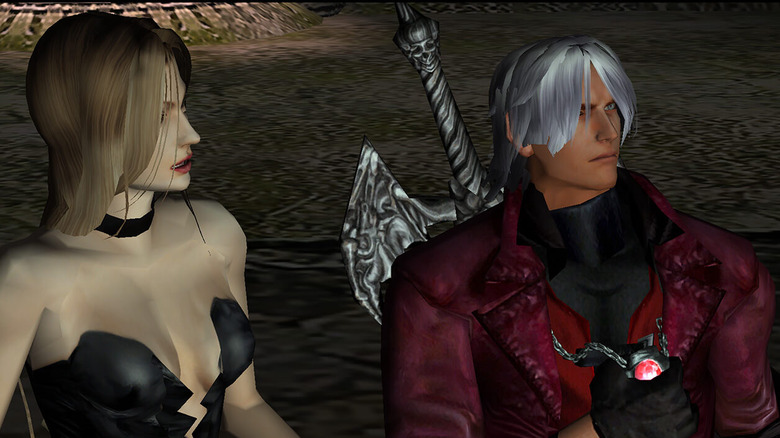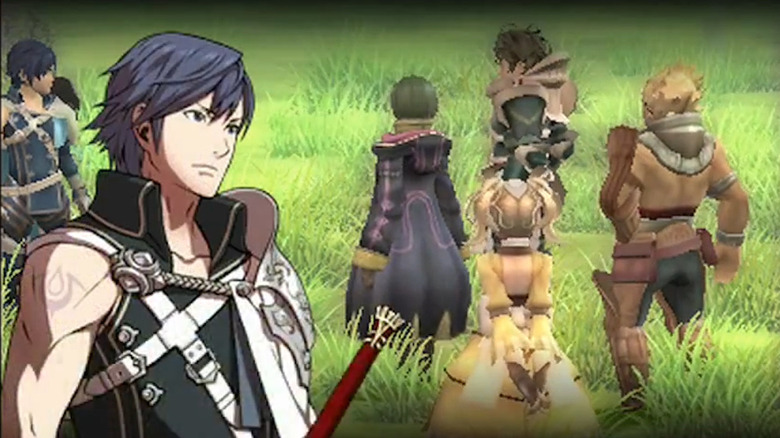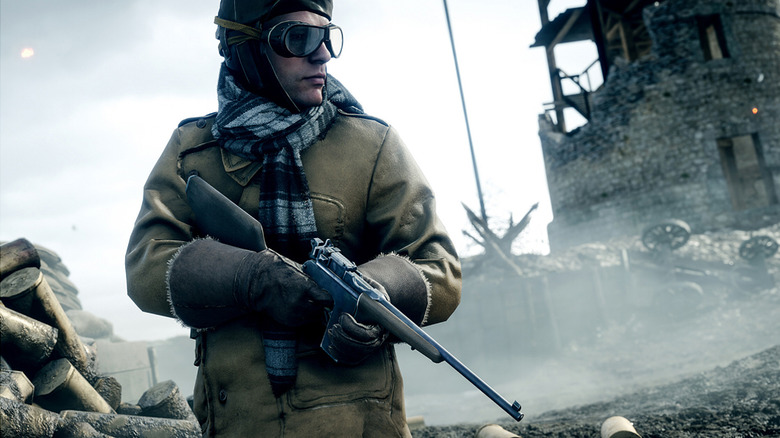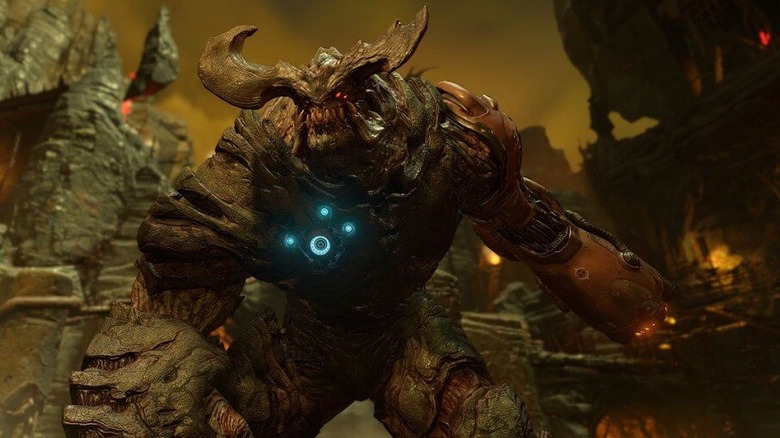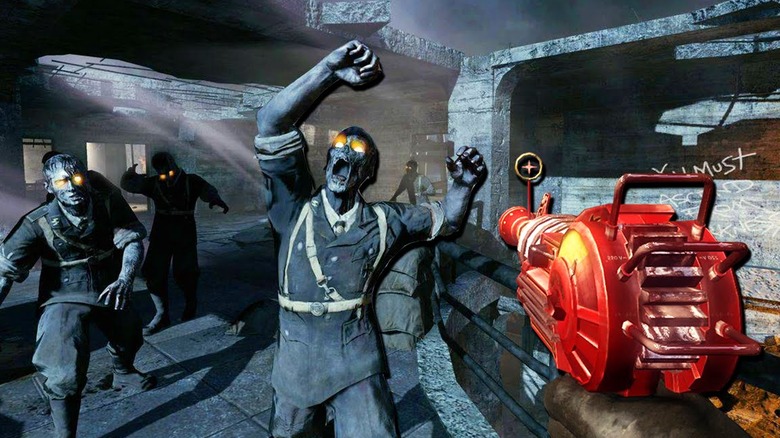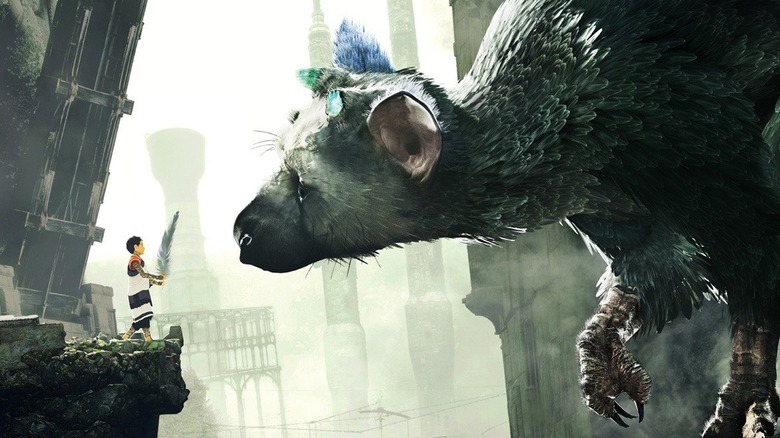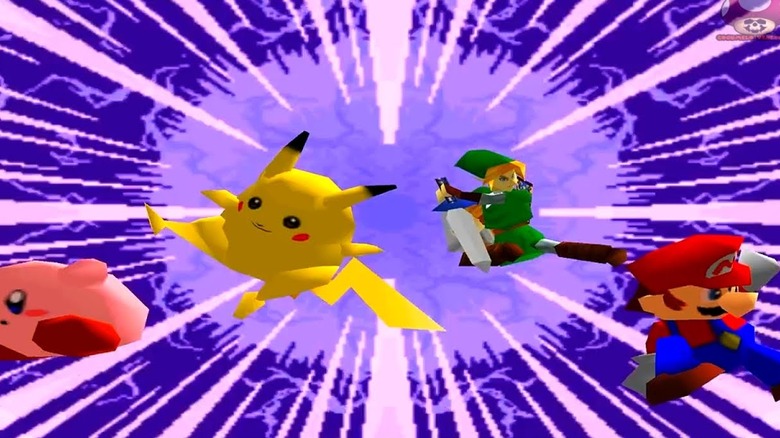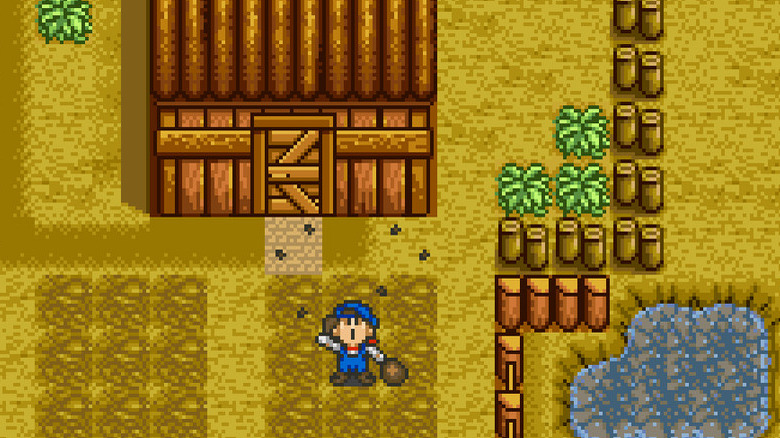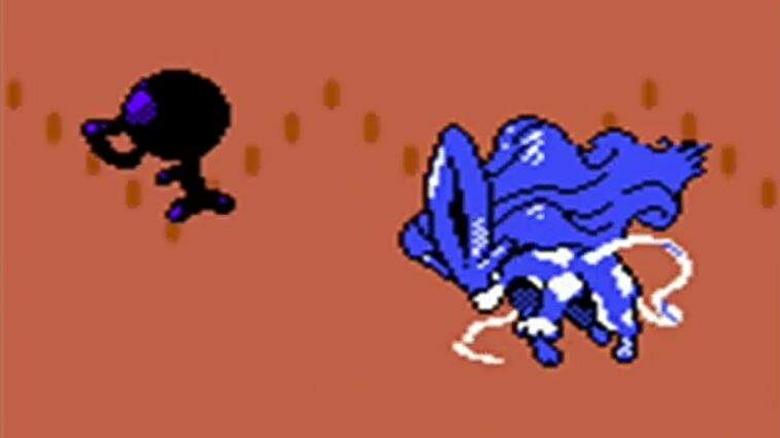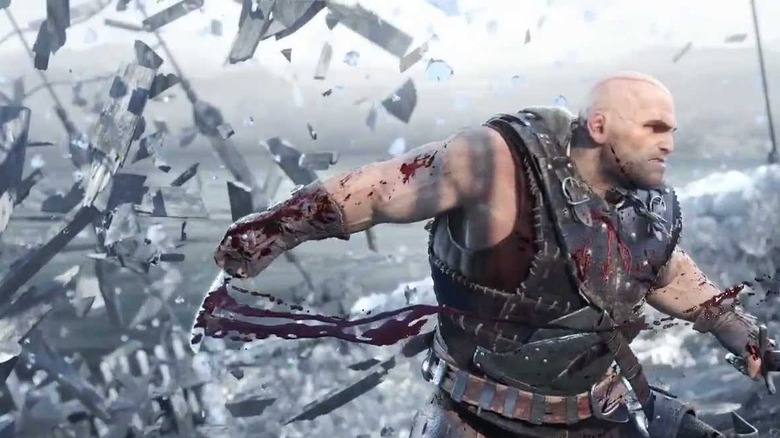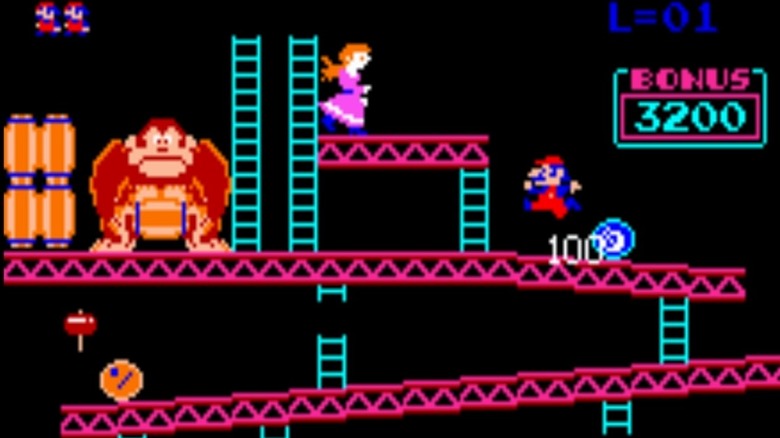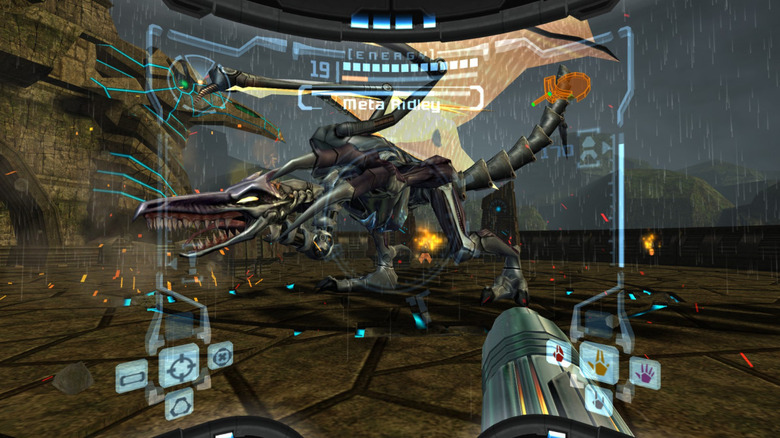Video Game Classics That Were Almost Never Made
Making a video game is hard work. From inception and design to focus testing and marketing, so many things have to go right before a game can be released to the general public (yes, even bad games usually have at least some work put into them). It should come as no surprise, then, that many video games that are considered to be bona fide classics came very close to not happening at all. From scandals to massive layoffs, from budget concerns to studio meddling or just plain burnout, the games on this list ran into several problems during their development period that nearly cost the world the joy of playing them. Some of these are major franchises that are still running today, series that are so popular that it's hard to believe they nearly didn't exist.
One thing is for sure: the landscape of gaming would look very different if these games were never made.
Devil May Cry was almost another franchise
This one is almost common knowledge these days, but the fact that the world nearly missed being introduced to the world of Dante, Son of Sparda, is still pretty hard to believe. After the success of Resident Evil 3: Nemesis, a Resident Evil 4 was inevitable. Many different ideas were floated around for what that might be. Concept art was drawn up for multiple characters and enemies which embraced a gothic style new to the series, but producer Shinji Mikami began to feel that the game had evolved so far beyond its survival horror roots and attempted to convince Capcom that this needed to be its own franchise. In an interview with IGN, Mikami says his idea was rejected, as Capcom's head of development was dead-set on completing a new Resident Evil.
It took months of patience and convincing each individual member of the development team that the "coolness" aspect of the game they were working on felt completely out of step with the rest of the Resident Evil franchise. After finally getting Capcom to see their side, the team embraced a more gothic visual style and implemented a combo system for the combat sections of the game. Devil May Cry launched an all-new action franchise, but much of the Resident Evil series' DNA can still be seen in that first DMC game, especially when it comes to solving Mallet Island's many puzzles.
Fire Emblem Fates was nearly doomed
The Fire Emblem series is a beloved tactical RPG franchise, with 15 entries in the core series and a sixteenth game on the way. However, during development of the thirteenth game, Fire Emblem: Awakening, developer Intelligent Systems was informed by Nintendo that the popularity of the series was waning, particularly in the United States. If Awakening didn't sell at least 250,000 units when released, Nintendo would retire the franchise.
In an effort to make the game as broadly appealing as possible, both to new players and longtime Fire Emblem fans, Intelligent Systems decided to incorporate some of the most well-loved aspects of different titles in the series into their new entry.
The result was one of the most accessible games in the Fire Emblem series, largely thanks to the newly implemented "Casual Mode." No longer did new players have to worry about losing their entire game thanks to the permanent death mechanics of past Fire Emblem games, while hardcore fans could continue to play in the "live and learn" style they'd grown accustomed to with the franchise. Fire Emblem: Awakening was released to rave reviews and more than surpassed the sales expectations set by Nintendo, saving the franchise.
Battlefield 1 almost never made it out of the trenches
Though Battlefield 1 received positive reviews and revitalized the franchise, it almost didn't happen at all (and was certainly almost a very different game altogether). Patrick Soderland, former Chief Design Officer of EA has said that he flat-out rejected the idea of a trench warfare game.
Said Soderland of the World War I setting, "It's trench warfare; it can't be fun to play." Soderland cited EA's competitors' then-recent successes with science-fiction titles (such as Call of Duty: Infinite Warfare) and games based around present-day warfare. The development team eventually won him over, and he told a group of investors that he felt this direction was "right for the franchise." To the happy surprise of EA, Battlefield 1 went on to sell over 21 million copies in its first year of release and led to a further historical installment, Battlefield 5.
Doom (2016) could have been a Call of Duty clone
2016's Doom was a total blast, combining the run-and-gun mechanics of the original games with a deeper mythology and over-the-top finishing moves. It was an adrenaline shot to the franchise and is set to be followed by a sequel.
However, the game almost died in development. In fact, the Doom reboot originally began development as a very different game, under the working title Doom 4.
After a few false starts, such as a version of the game heavily influenced by the Call of Duty series and an announcement trailer that was heavily mocked by fans, the game was quietly put on hold. This was confusingly followed by statements from Bethesda implying that Doom 4 never existed, despite leaked screenshots and footage. Combining these issues with original Doom co-creator John Carmack's departure from id Software, it certainly seemed like the game was dead in the water.
After deciding to focus on a reboot to give the series a fresh start, the game we know as the new Doom started to take shape, embracing fast-paced, first-person combat, to the joy of a very happy fan base.
Call of Duty's Zombies almost never rose
The Zombies mode has become a real mainstay in the Call of Duty series since its first appearance in 2008's Call of Duty: World at War. However, the popular feature began as just a bit of fun on the part of Treyarch's programmers, who were feeling worn out after developing the previous entry. The Treyarch team had a blast creating and then shooting their way through the waves of zombies, but they knew it would be very difficult to sell Activision on a scenario so far removed from the gritty World War II setting of the rest of the game, so they considered scrapping the project and focusing on World at War's core.
Eventually, some of the executives at Activision heard about the zombie mode anyway and tried it out for themselves. Even though they enjoyed it, this didn't make Zombies' release any more of a certainty, as they were unsure how to market it. That's when Treyarch head Mark Lamia suggested that they don't attempt to market it at all, leaving the zombies as an Easter egg for gamers to find and make their own minds up about.
The zombie mode was an instant hit, leading to Zombies being included in successive CoD games and a series of zombie-themed Call of Duty games for iOS.
The Last Guardian survived development hell
The Last Guardian was developed by Team Ico as their much-anticipated follow-up to such classics as Ico and Shadow of the Colossus. However, fan interest was one of the only things that ensured the game's eventual release. It began its long journey to home consoles around 2007, then under the temporary of name of Project Trico. Though a preview of the game was revealed at 2009's E3 convention, development was very slow, leading to Sony deciding to change its release platform from the PS3 to the soon-to-be-announced PlayStation 4. This meant the game had to be completely recoded. On top of that, Team Ico founder and game director Fumito Ueda departed Sony, with several Team Ico members following suit. President of Sony Interactive, Shuhei Yoshida, has been quoted as saying the game would likely have been canceled following all of these setbacks, had fans not continued to ask about it: "Having so many people asking us about the game was great encouragement for us to continue the development."
Therefore, Sony worked out a deal to continue their working relationship with Fumito Ueda's new studio, genDESIGN. Ueda would oversee the completion of the game with many of his old Team Ico members, bringing the development of The Last Guardian nearly full circle.
The Last Guardian has such an understated and beautiful story; who knew the story of its creation was so complicated?
Super Smash Bros. might have been its own separate series
Pitting a revolving roster of Nintendo's greatest characters against one another, the Super Smash Bros. franchise is a bona fide phenomenon. One can't help but wonder if Dragon King: The Fighting Game would have caught on quite as well.
The game that would become the first Super Smash Bros. began life as a four-player fighting game with somewhat generic character models duking it out. During production, however, designers Masahiro Sakurai and Satoru Iwata felt that their fighters all kind of blurred together. Feeling that home console gamers preferred more character-driven games than the arcade fighter crowd did, they pitched the idea of using Nintendo characters to show off the potential of a battle royale featuring video game all-stars.
There was some pushback at this request, both from Nintendo and fans alike, but Iwata and Sakurai eventually convinced Nintendo of the bankability of the concept, and so a fighting classic was born.
Harvest Moon just needed a little more time
The style and gameplay of Harvest Moon was almost an entirely new concept when it first came out, to the point where creator Yasuhiro Wada re-conceptualized the game multiple times during its development. In fact, due to a series of setbacks and false starts, the game almost wasn't completed. Starting as a simple simulator of raising cattle, the game eventually evolved to include a surrounding town and its people as supporting characters in the world of the game, fleshing out the world of Harvest Moon through benevolent side missions and NPC interactions.
About six months into working on the game with his team, however, Wada was "heartbroken" when the developer handling Harvest Moon went under. Though he was ready to give up on finishing the game, he was convinced to try again by his lead programmer and writer. Wada says they managed to negotiate an extra six months from their publisher, and the three of them worked tirelessly to finish the game, which went on to spawn a massively popular franchise.
Pokémon: Crystal Version was never meant to be
The Pokémon franchise has been going strong for over two decades, but the monster-catching phenomenon originally had an ending point in mind. In a 2010 interview, Pokémon Company CEO Tsnuekazu Ishihara was quoted as saying he "didn't intend to make any more Pokémon titles" after completion of 1999's Pokémon: Gold and Silver versions.
When looking at the structure of those games, this seems to make sense. The story of Gold and Silver is more than twice the size of the first generation of the series, including a lengthy second half where players revisit and battle their way through Red, Blue, and Yellow's eight Pokémon Gyms. It all culminates in a battle against the Pokémon Trainer Champion, who was the protagonist of the original games. That sure feels like a fitting end to the series, but Gold and Silver were smash hits, so the series continued to barrel along with Pokémon: Crystal Version and onwards.
The Witcher 2: Assassins of Kings was nearly killed by the first Witcher
In 2009, CD Projekt were in a fair amount of trouble. Following the success of the first Witcher game, the company began work on a sequel and outsourced a console port of the first game to Widescreen Games, a studio based out of France. They came to regret handing off the port, which was to be titled The Witcher: White Wolf. Widescreen continued asking for more and more money, draining the already-thin resources from CD Projekt . Faced with a dwindling budget and no port to show for it, CD Projekt could barely pay its employees, and constant in-fighting made Witcher 2 look less and less like a reality.
CD Projekt managed to convince Atari that White Wolf was not worth the trouble and to allow them to focus their remaining capital on finishing The Witcher 2. The team did just that, tossing all of White Wolf's assets aside and eventually finishing and releasing The Witcher 2: Assassins of Kings to excellent reviews, also paving the way for the award-winning The Witcher 3: Wild Hunt.
Donkey Kong almost fought a sailor man
Nintendo was struggling in the American arcade market in the late 1970s and early 1980s. While original games like Radar Scope were doing well in Japan, they weren't selling very well with American players. That's when designer/legend Shigeru Miyamoto sought to create a popular game by seizing upon a beloved children's property, Popeye the Sailor Man. While the idea of Popeye as a sought-after IP sounds like a silly risk these days, it makes perfect sense when you consider the year it was being developed. The Robin Williams-starring Popeye musical film was released in 1980, so the character was definitely present in the public consciousness once again.
There was just one problem, though: Nintendo couldn't secure the rights to Popeye, and they were already working on building this new Popeye-inspired game. Shigeru Miyamoto took this unfortunate development and turned it into franchise gold. Taking inspiration from King Kong, Miyamoto proposed swapping out the Popeye cast for original characters: Bluto became Donkey Kong, Popeye became Jumpman (later known as Mario), and Olive Oyl became Pauline. Donkey Kong was released to arcades in 1981 to massive success.
Some form of this game would have existed, but Donkey Kong himself (and the ensuing series of DK and Mario games) may never have existed if Miyamoto had made the Popeye game he intended.
Metroid Prime should never have worked
There was nearly a reality where the Metroid Prime series never came to be. Retro Studios was already in a rough spot when development began on the first Prime game. Much of their management was made up of people who were inexperienced in the gaming industry. Meanwhile, a lack of resources meant that many of their titles were being developed on game engines that were unsuited to the GameCube's hardware.
With a lot of money being poured into a team that wasn't showing them much in the way of results, Nintendo was already considering shutting the studio down. Instead, Nintendo's then-CEO Satoru Iwata saw the value in a first-person Metroid game. But Retro had to lay off more than half of their employees in order to focus the time and resources into making Metroid Prime. These massive layoffs were followed by Retro's founder stepping down from the company after a scandal involving a risque website he was running on Nintendo's servers, stalling forward momentum on the project. Nintendo allowed Retro to continue work on Prime, but planned to shutter the studio once the game was completed.
Of course, Metroid Prime went on to be a huge hit and was followed by two successful sequels, both developed by the folks at Retro.
And the galaxy was at peace.

